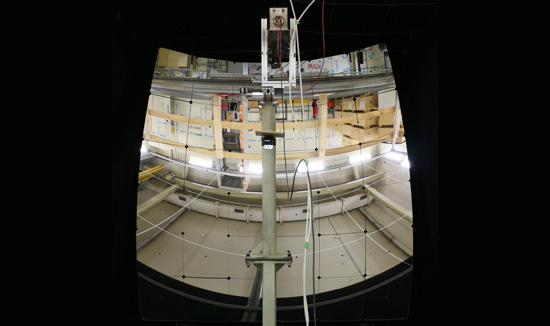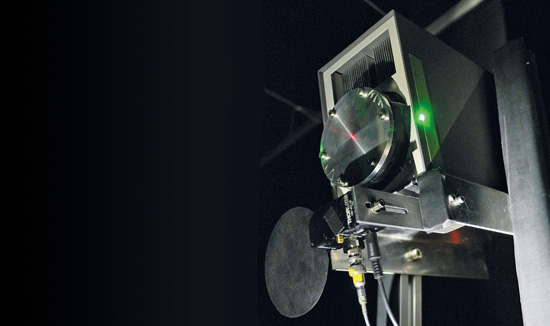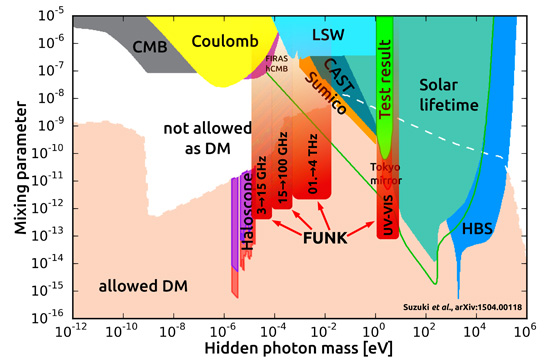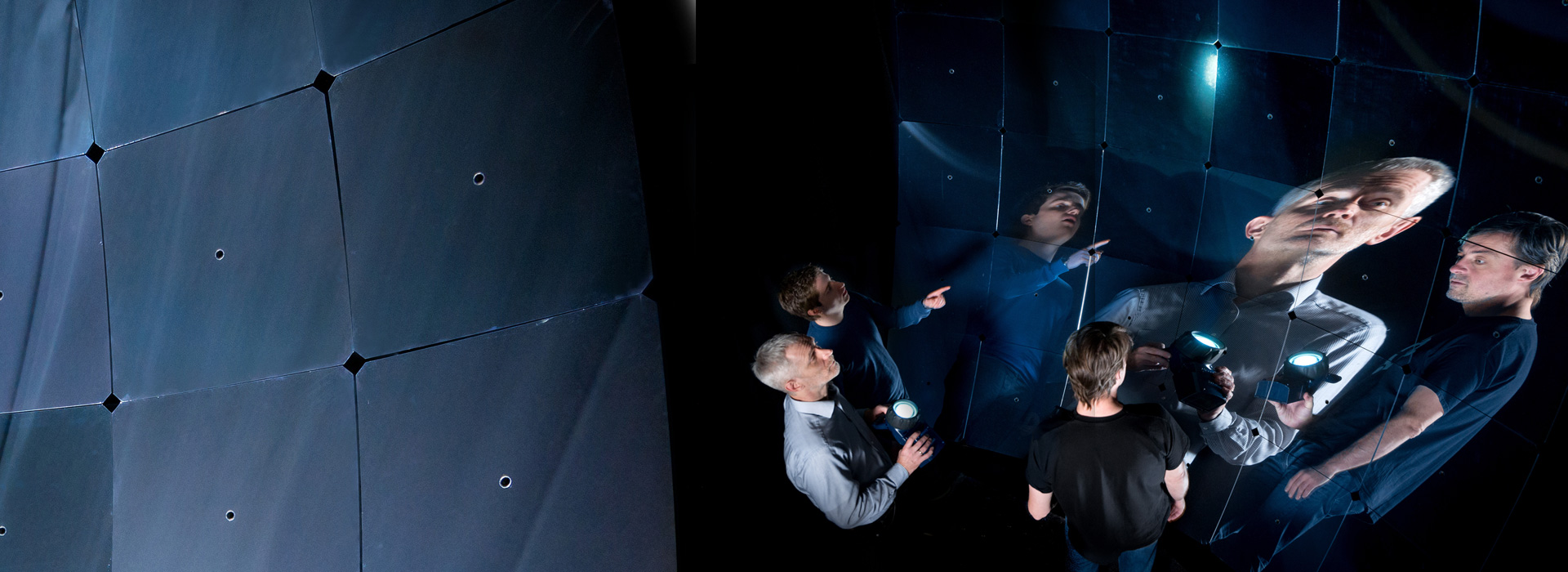FUNK – Search for hidden-photon dark matter
In case dark matter consists of hidden-sector photons which kinetically mix with regular photons, a tiny oscillating electric-field component is accompanying the dark matter. At the surface of a conducting material this can induce an emission of photons with the corresponding photon frequency matching the mass of the hidden photons. An experimental setup with a large spherical metallic mirror has been constructed to test for hidden-photon dark matter in the eV and sub-eV mass range by application of different electromagnetic radiation detectors.
In case dark matter consists of hidden-sector photons which kinetically mix with regular photons, a tiny oscillating electric-field component is accompanying the dark matter. At the surface of a conducting material this can induce an emission of photons with the corresponding photon frequency matching the mass of the hidden photons. An experimental setup with a large spherical metallic mirror has been constructed to test for hidden-photon dark matter in the eV and sub-eV mass range by application of different electromagnetic radiation detectors.
There is a number of convincing astrophysical and cosmological evidences that a large fraction of the energy density in the universe must be composed of invisible non-baryonic matter or dark matter. The most explored options for explaining dark matter are extensions of the Standard Model predicting axions and weakly-interacting massive particles. In recent years attention has been turned also to alternatives or weakly-interacting slim particles (WISPs), as e.g. axion-like particles or hidden photons. WISPs could be non-thermally produced in the early universe and survive as cold dark matter until today. Although many detection methods have been proposed for the search of dark matter, only a few active efforts exist in the low-mass particle sector. While the viable parameter space for WISPs is likely to be tightly constrained by cosmological observations in the axion sector but not so much in the hidden-photon option, the final and definitive answer should be given by the dedicated experiments.

and the low-noise photomultiplier in the center of the curvature (top)

UV-extended visible range of photon wavelengths. The cross-section of the red and
green laser beams marks the spherical center of the mirror.
In our case we consider hidden photons as candidates for the dark matter, which emerge from an extension of the Standard Model through additional light U(1) gauge bosons that kinetically mix with the Standard Model photons. Large regions of the hidden photon parameter space, spanned by its mass and mixing strength with regular photons, are compatible with the observed dark matter signatures and are already searched for with many experimental methods: haloscopes, helioscopes, and light-shining-through-a-wall methods like ALPS at DESY. Direct search experiments for WISPy dark matter are usually very time consuming as they need to be tuned to the assumed WISP mass.
At the Karlsruhe Institute of Technology the experiment FUNK - Finding U(1)s of a Novel Kind – has been setup as a dedicated broadband observation of possible candidates for hidden photons with the so-called dish-antenna method. At the surface of a conductor the dark matter, accompanied by a tiny oscillating electric component, gets with low probability converted to faint electromagnetic waves. These waves can be geometrically enhanced and focused by a spherically shaped mirror. Since the photons are emitted almost perpendicularly to the conducting surface, the hidden-photon-induced light emerging from any part of the mirror is effectively gathered in the center of the sphere while the unavoidable photon background is due to its random direction not subject to such enhancement. In the center of our mirror with an area of more than 14m2 various detectors can thus be suitably placed (Fig. 1). The dark-matter nature of the signal can be verified by exploiting the daily and seasonal variations of the relative motion of our detector with respect to the ambient dark matter. The relative velocity is expected to be a few 100 km/s and results in a tiny change in the direction of the emitted photon with respect to the mirror surface, which is for example easily detectable with a CCD. Once dark matter is detected, such measurements would allow determination of details of the local dark matter halo structure.
Currently high-sensitivity measurements are performed with the setup in the UV-extended visible range of the photon wavelengths using a cooled low-noise photomultiplier ET9107BQ (Fig. 2). In the near future various standard and novel photon sensors and wave receivers will be deployed, covering the 3 to 15 MHz, 15 to 100 MHz, and 0.1 to 4 THz spectrum range, see Fig. 3. As dark matter hidden photons would move at non-relativistic speeds, the FUNK search frequency is given by its mass.


The device with a frost glass on a motorized stage, used for focusing of
individual mirror segments, can be seen on the right side.

